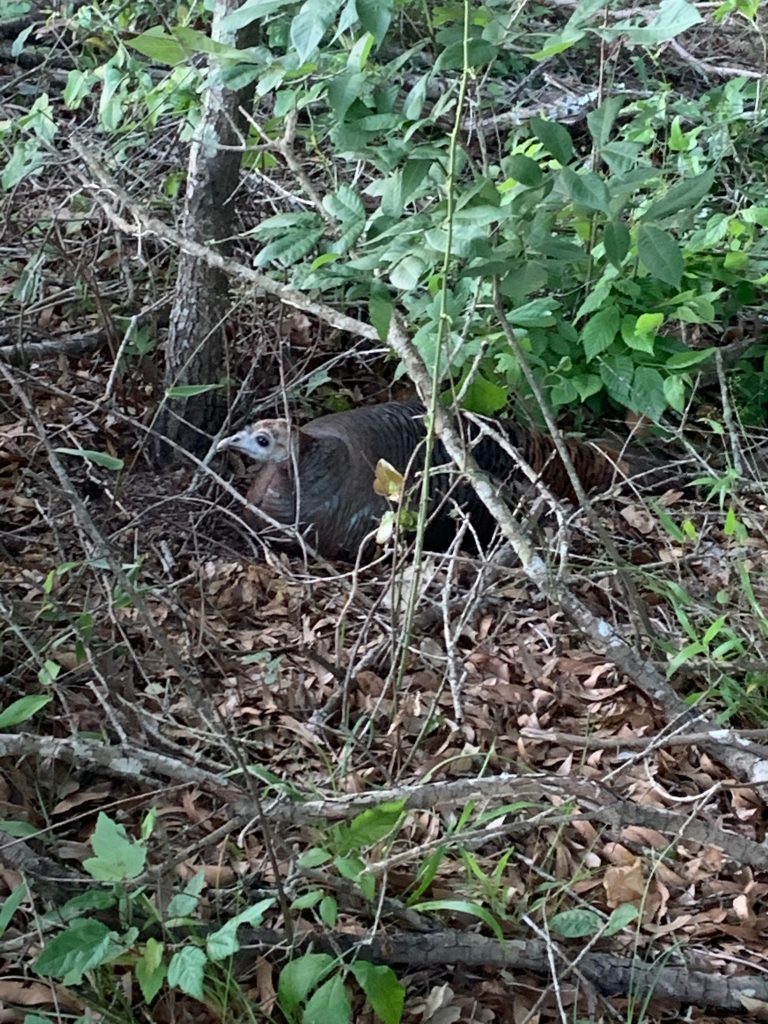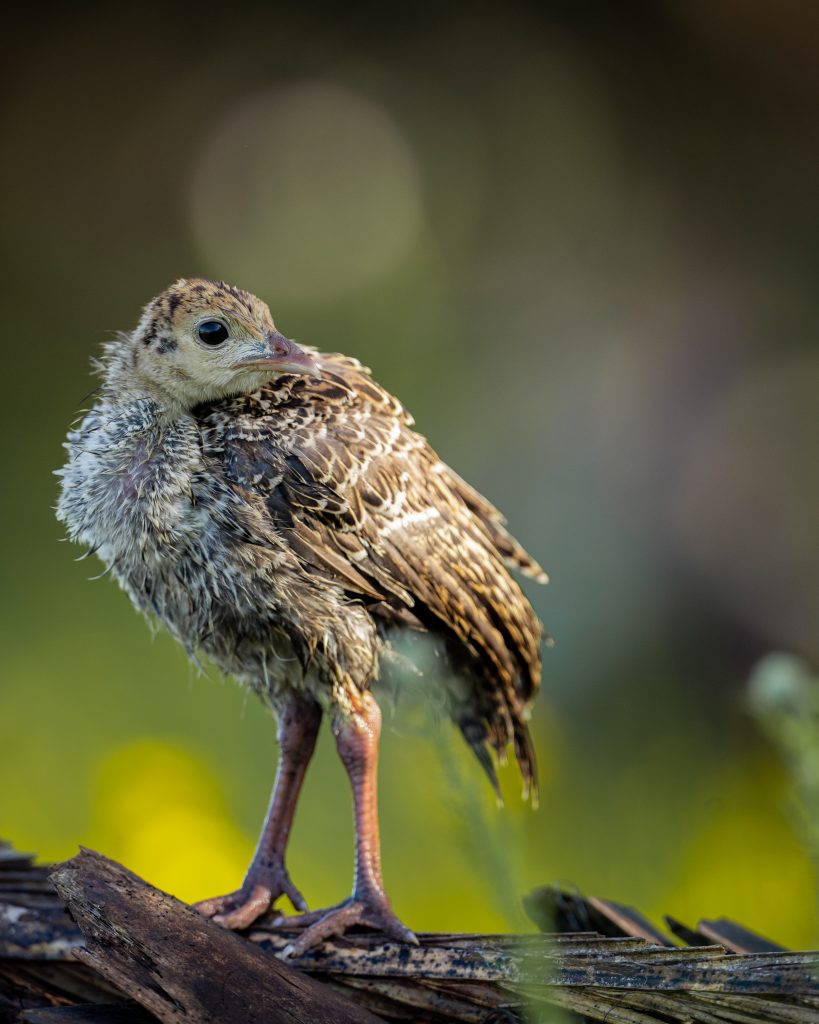Wild Turkey Reproduction: The Journey
From hearing more gobbles in the springtime woods, to seeing flocks of turkeys thrive on the winter landscape, we all want to see and hear more turkeys.
To support populations, ensuring wild turkeys are able to successfully reproduce year after year is vital. For the NWTF’s fourth annual Conservation Week, we are looking at the nuances of wild turkey reproduction and different ways to help proliferate the species.
We often associate turkey reproduction with the springtime, and rightly so, as that is when hens nest and subsequently begin to raise their brood of poults. However, how successful a hen is at reproducing in the spring hinges upon how well she comes out of winter, especially in northern climates.
“Incubating eggs is high-energy demanding,” said John Burk, NWTF district biologist for Illinois, Iowa and Missouri. “Hens build up a lot of kidney fats because they're not going to be doing a whole lot of feeding for the 28 days it takes to lay those eggs. On top of that, when you have juvenile hens coming into the nesting season, they need to achieve a certain body weight and be in a certain condition to be able to reproduce.”
In Burk’s region, old agricultural equipment used to leave behind a lot more grain after harvesting. However, updates in equipment technology leaves less product behind in the field, making it harder for juvenile hens in the Midwest to get to a level where the biological process to begin nesting can even start.
“What historically had been these high-energy food sources just isn't out there like it used to be,” he said. “So juvenile nesting rates are probably lower than they were when we had that food availability on the landscape. So, in this instance, the reproductive potential is going to be lower than it was. This is a good anecdote that shows the importance of hens coming into the nesting season in really good shape and how that's going to fuel re-nesting rates.”
Moreover, if a hen comes out of winter in good shape, she may attempt to re-nest up to three times. But if she is in poor shape from the winter she may not attempt to re-nest, if she nests at all.
“What we see a lot of times is the hens will nest the first time, but the re-nesting rate is really what takes a hit with bad body condition coming out of winter,” added Chuck Carpenter, NWTF district biologist for Arizona, Idaho, New Mexico and Utah. “And with re-nesting, there are generally fewer eggs in those re-nests, but it does add significantly to the poult numbers in the spring. So if you do take a hit to that re-nesting, you will see a pretty significant reduction in poults.”
Exiting the winter in the best condition possible is critical for wild turkey reproduction, but even if winter loosens its grip earlier, hens will not begin mating with toms just because the weather has warmed up.
“The primary driver of turkey reproduction is photoperiod,” Burk said. “The amount of day length triggers a hormonal release by the sunlight coming through the turkey's eyes. So it can't ever really be earlier than a certain date, but it can be postponed by as much as two or three weeks because the secondary trigger is nutrition; an egg is pure protein, so that hen has to get to a certain threshold before the egg development process will kick in, and that's triggered by spring green up. In my region, particularly in the northern parts of the region, if you have a late winter, that spring green up doesn't happen. Turkey reproduction can be delayed.”
Once a hen has reached her nutritional threshold and has been bred by a tom, it is time for a hen to pick her nest and begin nesting. And while there is still a lot of mystery in how a hen chooses her nest, some research has brought forth some new information.
“Essentially, the hen is in a specific area, let’s say a meadow or ravine, meandering, and when that egg needs to come out, she just essentially walks over to the spot, and that's where she lays her nest,” Carpenter said. “It's not really predetermined or preordained, that particular spot. A lot times, the turkey has never been to that particular spot. It's just that they know that area.”

After a hen has chosen her nesting location, laid up to a dozen eggs and incubated for nearly a month, poults begin emerging from their eggs, and the hard work of the hen continues.
“If that hen nested more than 800 yards from quality early brood range, her poults will likely not survive the journey,” Burk said. “So the key to managing for turkeys is to put as much of that quality early brood range as you can on the landscape, so that by default hens are going to be close to it.”
In addition to habitat, weather can also play a determining role in poult survival.
“Poults, when they hatch, cannot thermoregulate,” Carpenter said. “They're really dependent on the hen for heat, for warmth. So, if they get soaking wet from rain, it's really up to the hen's body heat, and it's essential to keep them warm. If you have a soaking wet hen and soaking wet poults, it's just the perfect storm for all of them to die.”
Poults, for about two weeks of their life, have limited flight ability, and this is when predation is the highest because they're the most susceptible to it; they're stuck on the ground.

“In that time period, what we want to see and the fastest way to get poults to improve those flight skills is insect availability,” Carpenter said. “They need protein. They need high insect amounts in their diet. And then after that, you kind of go into the intermediate stage, two to four weeks, where the poults are growing, their flight muscles are strengthening, the wing feathers are developing, and they can start to make longer and higher flights. They're still confined to short bursts, but their ability to fly improves and they start to roost in trees.”
Around the four-week mark, they're capable of longer flights, Carpenter added. They can fly from the ground to low branches and anything else they need to get to. By this stage, their susceptibility to predation has gone down substantially. From eight to 12 weeks, they usually have full flight capability.
By 14 weeks, male and female birds are distinguishable by body size and plumage, and as fall and winter get closer by the day, they begin their long and arduous journey as the hens and gobblers did before them: reproduce and create more turkeys across the landscape.
CONNECT WITH US
National Wild Turkey Federation
770 Augusta Road, Edgefield, SC 29824
(800) 843-6983
National Wild Turkey Federation. All rights reserved.
